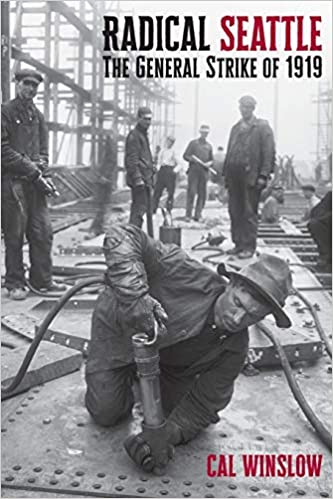Popular uprisings are rarely as spontaneous as the mainstream press often makes them out to be. Instead, from the Paris Commune to the Arab Spring and beyond, they are more often the result of extended grassroots organizing, previous actions and strikes, and even legislative campaigns. The rates of participation are almost always linked to the amount of organizing that took place weeks, months and even years before the event takes place. Of course, the immediate cause of these popular, radical and even revolutionary events is usually an action taken by the powerful that serves as a catalyst for the reaction of the people in the streets. In the May 1970s national strike against the US war on the people of Southeast Asia, the catalyst was the deadly military assault on college students protesting the US invasion of Cambodia. The national rebellion following the murder of Martin Luther King, Jr. in 1968 was part of a decades-long movement against the racism of the US government and economic system. The catalyst for the uprisings known as the Arab Spring was the self-immolation of Mohamed Bouazizi, but the organizing for the protests that followed in Tunisia and throughout the Middle East had been taking place for years.
It is this understanding that makes Cal Winslow’s recently published book Radical Seattle: The General Strike of 1919 such an excellent history. Winslow tells the story of the five-day general strike, but more importantly, he spends most of the text relating the strikes, protests, and overall organizing that culminated in the event itself. It is a story that includes the tumultuous and occasionally deadly history of the Industrial Workers of the World (IWW/Wobblies) in the woods and mills of the US Pacific Northwest, the ups and downs of the Longshoreman’s Union on the Seattle docks, and the influence of a labor newspaper that rivaled the circulation of the mainstream press during its heyday. There are personalities larger than life: labor organizer Elizabeth Gurley Flynn and socialist politician and organizer wo opposed World War One Louise Strong; IWW organizer Walker Smith and organizer Kate Sadler among them. Yet, despite Winslow’s occasional focus on these and a couple other individuals, his true and constant focus remains on the role of the common working person. Loggers, mill workers, steelworkers, longshoremen, seamstresses and others—this history is truly a people’s history. It also does not shirk from the movement’s shortcomings, primarily the racism against Blacks and Asian workers in some unions.
The reader is presented with the story of a city—indeed, a region—lively with worker’s organizations and an almost universal understanding amongst laborers that they deserved better than what they were getting, that it was the owners and the politicians they ran that were the immediate cause of their poverty and pain, and that the working class held the means to change things for the better. Naturally, that means was the strike. By withholding their labor, the loggers were able to get shorter working days and better living conditions in the camps. Mill workers obtained pay raises and shorter hours, and longshoremen hoped to get steadier work and more control over the hiring. Radical Seattle describes the successes and failures and the nature of the enemy. Composed of powerful men in the city and region aligned with wealthy financial interests on the east coast of the United States, it was a formidable foe. Unafraid to use the police and private security forces who were little more than vigilantes, the rulers gloated when their mercenaries killed Wobblies in Everett, Washington and toasted the police and sheriffs when they drove them out of town.
The culmination of the text is the story of the general strike itself. Other books may have provided more detail regarding the actual mechanics of the strike, but Winslow’s work does a fine job of expressing its spirit. The management of a city by workers’ councils and without regular police or capitalist politicians in charge of anything is a dream that the workers of Seattle managed to pull off, if only for five days. Inspired by the revolution in Russia and angered by their abuse by management, ownership and the political system in cahoots with the capitalists, Seattle’s workers proved that they could run their world without those who stole it from them. Instead of repeating the conclusion that the strike was a failure because it did not meet its primary goal of gaining the longshoremen’s demands, Winslow writes that the overall consensus among the general strike’s participants that it was a success, even if the time wasn’t quite ripe. The workers proved to themselves they did not need the bosses to run their lives. That, in itself, is a lesson we can all learn.